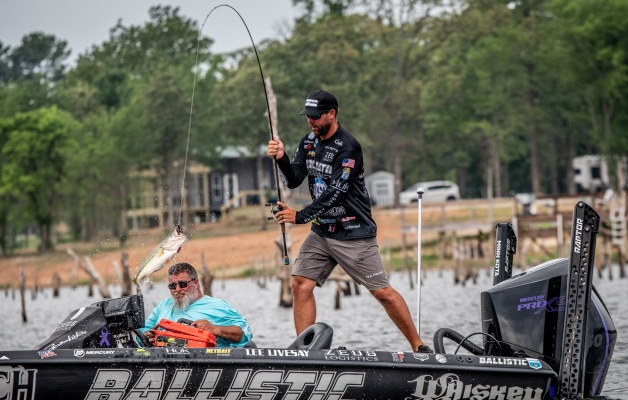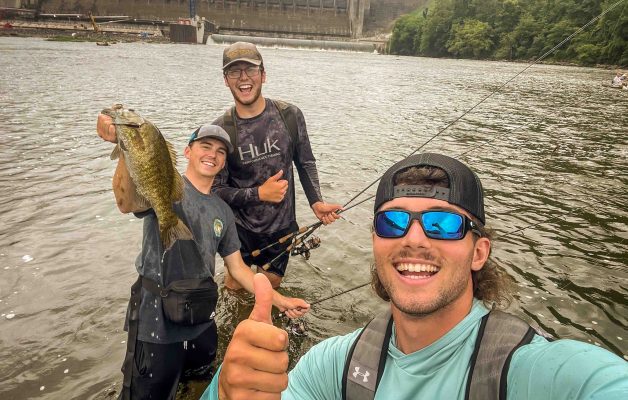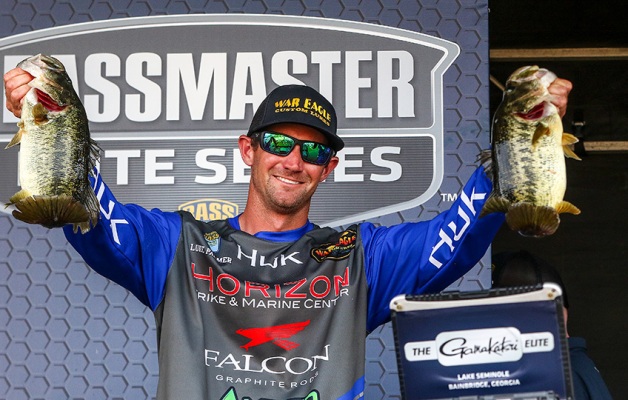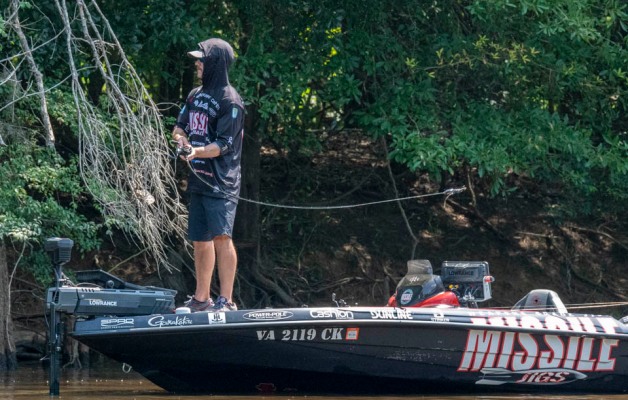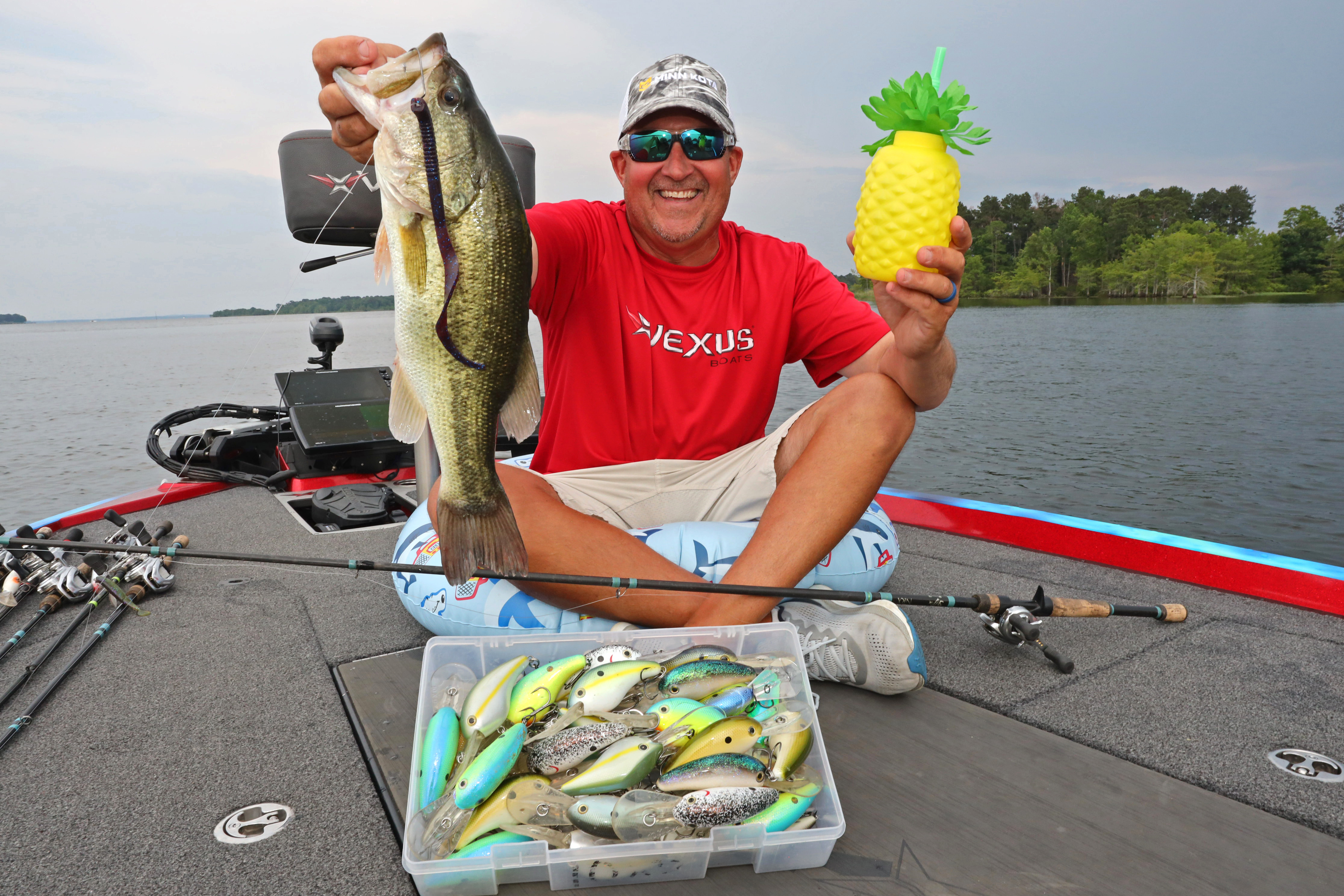
East Texas bass fishing legend Stephen Johnston doesn’t always carry an inflatable innertube and a fruity drink on the spacious front deck of his Vexus, but when it comes to having summer fun with trophy-sized summer largemouth, he’s never without big plastic worms and deep diving crankbaits.
Fisheries biologist and Bass Fishing Hall of Famer, Gene Gilliland, explains that Johnston is wisely appealing to a big largemouth’s warm water appetite. “Bass are cold-blooded critters, so in the summer, when water temperatures are at their peak, a bass’ metabolism is ramped up as high as it gets all year and that demands a lot of food intake,” says Gilliland.
“Furthermore, Mother Nature programs predators for efficiency. So, eating a big meal is more efficient than burning a lot of calories while chasing down lots of smaller forage items,” he explains.
Let the thermocline help you find them
Before you can feed them a big worm or oversized crank, you gotta find them and Johnston says today’s electronics will easily show a horizontal band of ‘pepper’ across the screen representing the thermocline. This is where a major change in water temperature and oxygen levels exist as you go deeper in the water column.
“There’s hardly any oxygen below a summer thermocline. So, for example, if you see the thermocline is 20-feet deep, then you want to target fish-holding spots a few feet shallower, around 16 or 17 feet deep, because there’s obviously no need to dredge around where there’s no oxygen,” says Johnston, who appreciates the super-wide front deck of his Vexus VX21 that allows him to stand shoulder-to-shoulder with two clients as they line up precise casts on schools of fish he’s located.
Serve the big worm first and use a 1/2-ounce sinker
Oversized worms and deep diving crankbaits are often served together like backyard burgers and potato salad during summer, but Johnston says it’s wise to offer a school of hungry largemouth the worm first, because fish hooked on a big crankbait sometimes pull loose and that spooks the rest of the fish in the school from biting. However, bass seldom come unbuttoned on a plastic worm.
“The one thing I do a little different when fishing a big worm is use a ½-ounce sinker instead of a 3/8 or 5/16. I want that heavier weight to help me get their attention by creating a bigger disturbance on the bottom of the lake,” says Johnston.
Be properly equipped for deep crankin’
Crankbaits that dive to a max depth of around 15-feet or less and weigh less than an ounce, can be thrown on 12 pound line, but when stepping up to the mega-sized deep divers like Strike King’s 10 XD, which weighs a hefty 2-ounces and can consistently reach depths of 20-feet or more, you’d better be throwing it on at least 18-pound Sunline Sniper fluorocarbon.
A really long cast is absolutely critical to achieving maximum depth and keeping the lure at that depth for a long period of time. That’s best achieved by utilizing a rod at least 7-foot, 6-inch in length with plenty of flex to allow you to ‘sling’ it. Johnston’s deep cranking rod of choice is a Shimano Zodias glass casting rod. So, don’t be intimidated by the bigger baits preferred by the high metabolic rates of hot weather bass. First, find the thermocline and then feed ‘em the sort of oversized treat that appeals to them in the same way you’re likely fond of a burger on the grill and a refreshing beverage amid the year’s warmest months.

